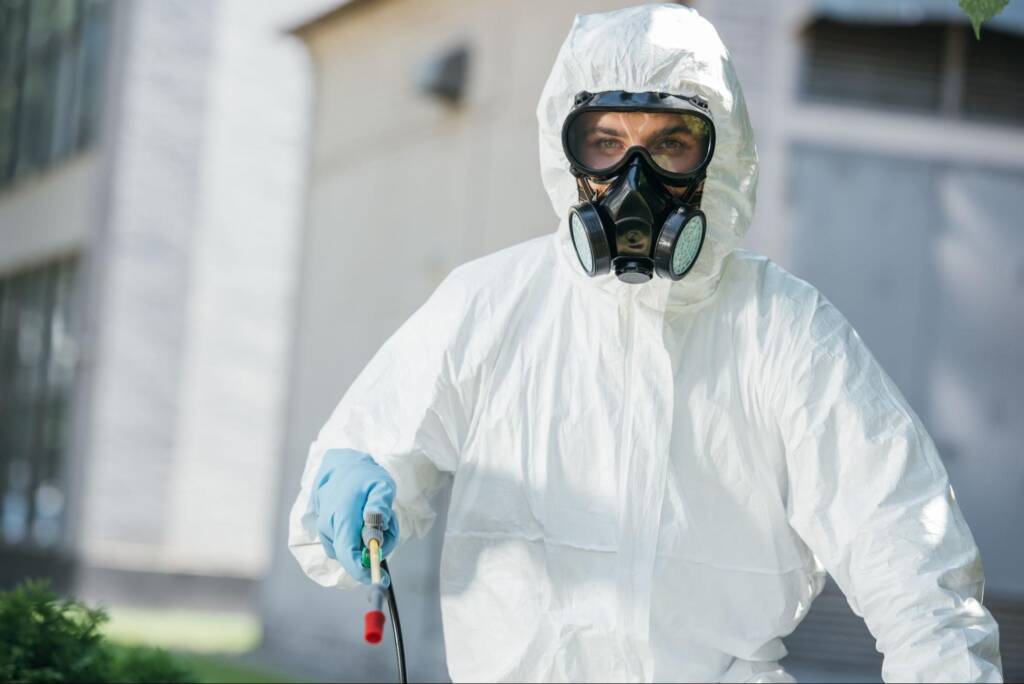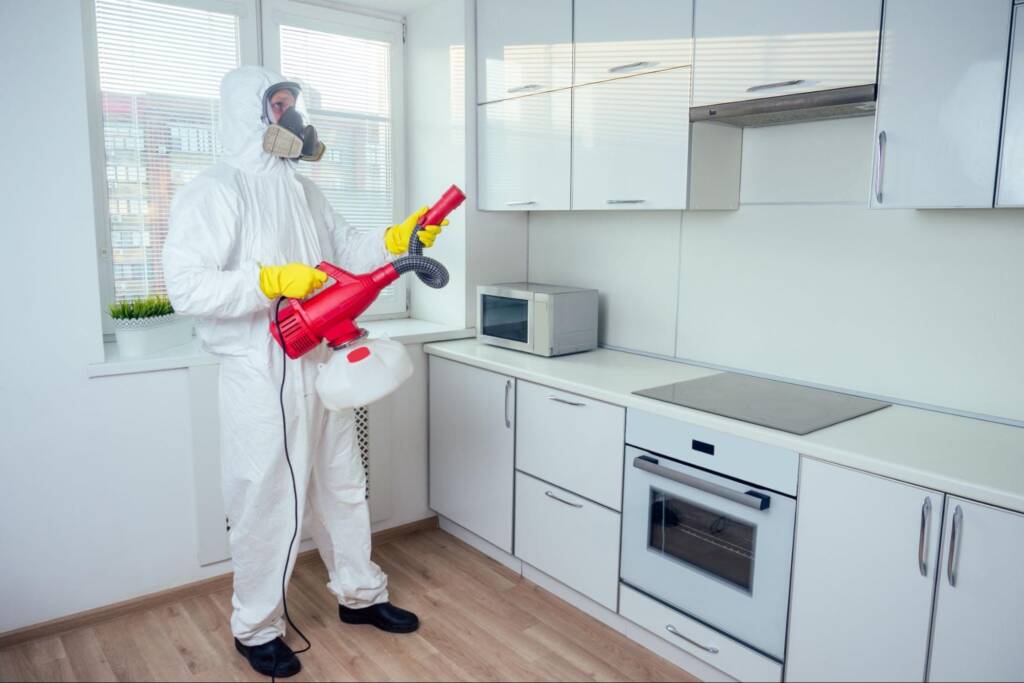Dealing with a bed bug infestation can drive anyone up the wall. These pests are persistent, hard to spot, and even harder to eliminate without the right approach. Waking up to itchy bites, spotting blood stains on sheets, or noticing tiny insects near mattress seams are all signs that call for action. Many turn to quick DIY hacks that promise results but barely scratch the surface. Hiring a trusted bed bug exterminator makes a more considerable difference than relying on myths that only prolong the problem. Pest control for bed bugs only works when backed by proven techniques and expert handling.
Signs Your Household Needs Pest Control for Bed Bugs
Spotting early signs of a bed bug infestation helps stop it before it spreads out of control. These pests often hide in small cracks and only appear once the situation worsens. Acting fast means less stress, fewer bites, and better sleep. Pest control for bed bugs works best when signs are caught and handled by a bed bug exterminator.
Itchy, Red Bites on Skin
Small, itchy bites in clusters or straight lines often appear overnight. These marks usually appear on the arms, legs, neck, and back. Bed bugs feed at night and leave behind red, raised welts that itch more over time. Scratching these spots can lead to irritation or infection.
Blood Stains on Sheets or Pillowcases
Tiny red or rust-colored spots on bedding suggest crushed bugs after feeding. These stains are often mistaken for something else until they keep reappearing. Sheets, pillowcases, and even pajamas can show faint marks. Regular cleaning won’t stop the stains unless the infestation is treated.
Dark Fecal Spots on the Mattress or Furniture
Bed bug droppings leave behind dark, ink-like spots near seams or corners. These marks may also appear on headboards, bed frames, or nightstands. Over time, they build up into noticeable patches. Their presence usually means bugs are hiding nearby.
Musty or Sweet Odor in the Room
A strong, musty odor with a sweet edge may fill rooms with heavy infestations. The smell comes from the bed bugs’ scent glands when they gather in large numbers. More minor infestations may not produce much smell at first. Once the odor is noticeable, professional pest control becomes necessary.
Live Bugs or Shed Skins Found in Seams or Cracks
Adult bed bugs are tiny, flat, and reddish-brown, while younger ones are pale. They often hide in mattress seams, behind wall hangings, or under baseboards. Shed skins are a clear sign that bugs are feeding and growing. Finding even one live bug suggests others are nearby.
Why DIY Pest Control for Bed Bugs Often Doesn’t Work
Many people try DIY tricks to save money or avoid calling a bed bug exterminator, but most of these efforts only drag the problem out longer. Bed bugs hide too well and reproduce too fast for surface-level fixes. Some methods make the infestation worse by spreading bugs to new spots. Pest control for bed bugs requires more than random sprays and home hacks. DIY can temporarily ditch bed bugs. However, there are surefire methods that can prevent these pests for a long time:
Over-The-Counter Sprays Miss Hidden Bugs
Most sprays only kill the bugs they encounter, leaving eggs untouched. Bed bugs hide deep in furniture, baseboards, and walls, where sprays rarely reach. The infestation continues to grow behind the scenes. Many bugs also survive after exposure and become difficult to eliminate.
Foggers Can Spread the Infestation
Foggers drive bugs deeper into walls or new rooms instead of killing them. These products don’t reach the cracks and crevices where bugs hide, resulting in a wider spread and a bigger problem later on. Misuse can also create health risks for people and pets.
Home Remedies Don’t Eliminate Eggs
Baking soda, essential oils, or dryer sheets may sound harmless, but they do almost nothing to stop bed bug eggs. Eggs hatch quickly and bring the problem right back. Killing adults without touching the eggs means the cycle never ends. DIY methods often ignore this completely.
Inconsistent Application Causes Delays
DIY approaches often lack a clear plan or schedule, leading to missed spots and wasted effort. Bugs need repeated treatments and follow-ups to fully disappear. Skipping just one hiding place lets them return stronger. Delays make professional pest control even more necessary.
Resistance to Common Chemicals
Some bed bugs have built up resistance to chemicals found in common sprays. These bugs survive treatments that worked years ago. Relying on outdated or weak products does more harm than good. A licensed exterminator knows which formulas still work.

Pest Control for Bed Bugs That Delivers Real Results
Getting rid of bed bugs takes more than guesswork. It requires proven techniques backed by real results. Sprays and home tricks rarely handle deep infestations or reach hidden eggs. A bed bug exterminator uses various tools to stop the problem at every stage. Pest control for bed bugs works best when treatments are layered and consistent.
Professional Heat Treatments
Heat kills bed bugs in all life stages, including hidden eggs. Professionals raise the room temperature to wipe out the infestation in one session. This method gets into cracks, furniture, and walls where bugs usually hide. It’s fast, thorough, and doesn’t rely on chemicals.
Targeted Chemical Applications
Licensed exterminators use pesticides approved for bed bug control. These products are stronger than over-the-counter sprays and are applied to key hiding spots. Multiple visits may be needed to break the bug’s life cycle. Safety measures keep people and pets protected during treatment.
Steam Treatments for Infested Areas
High-temperature steam works well on mattresses, couches, and baseboards. It kills bugs and eggs on contact without leaving chemical residue behind. Steam should be applied slowly to let the heat penetrate deep enough. This method pairs well with other professional treatments.
Vacuuming to Reduce Bug Numbers
Strong vacuums pull bugs out of seams, cracks, and corners. This method helps reduce the number of bugs before a deeper treatment starts. Bags and filters must be sealed and thrown away right after use. Vacuuming alone won’t end an infestation, but it helps control it.
Encasements for Mattresses and Box Springs
Special covers trap bugs inside and block new ones from settling in. These encasements should stay sealed for at least a year to ensure that no bugs survive. They make inspections easier and limit hiding spots. Using them after professional treatment adds an extra layer of defense.
When to Call a Professional Pest Control for Bed Bugs
Some infestations go beyond what DIY efforts can handle. Once bugs multiply and hide in hard-to-reach areas, it’s time to bring in a bed bug exterminator. Quick action helps avoid more bites, lost sleep, and wasted time on weak treatments. Pest control for bed bugs becomes necessary when the signs grow more severe or stubborn. Spotting these situations early leads to faster, lasting results.
Bugs Keep Coming Back After Treatment
Repeated sightings after spraying or cleaning mean the infestation is still active. Bugs may have moved to new hiding spots or survived weak products. DIY efforts often miss eggs, which hatch and restart the problem. Waiting too long allows them to spread to more rooms. A pro knows how to shut down every stage of their cycle.
Large Clusters of Bites Appear Regularly
Waking up with multiple fresh bites each morning points to an ongoing issue. These marks tend to appear in straight lines or grouped patches. OTC creams may ease the itch but don’t stop new bites. More bites often mean more bugs hiding in furniture or walls. Calling a professional stops the pattern before it gets worse.
Signs Spread Across Multiple Rooms
Stains, shells, or live bugs in more than one room show how fast the infestation has grown. Treating one area no longer works when bugs are active in multiple spots. They travel through walls, luggage, or bedding and create new nests. Spraying a single room won’t touch the whole problem. Full-property treatment becomes the better move.
Severe Allergic Reactions to Bites
Some people develop strong skin reactions to bed bug saliva. If bites are scratched too much, they can cause swelling, blistering, or infections. These reactions cause stress and discomfort, especially when new bites appear daily. Medical treatment may help, but it won’t stop the source. A pest control expert handles the root issue.
Visible Bugs During the Daytime
Bed bugs usually hide during the day and come out at night. Spotting them crawling in plain sight means the infestation is heavy. Daytime sightings suggest overcrowding in their usual hiding places. This level of activity won’t stop without professional help. The longer it goes, the harder it becomes to remove them fully.

Stop the Cycle With Proven Pest Control for Bed Bugs
DIY tricks and temporary fixes often let the problem linger, giving bed bugs time to spread and multiply. Spotting signs early helps, but accurate results come from treatments that reach deep into hiding spots and eliminate every stage of the infestation. A trusted bed bug exterminator brings the right tools, timing, and follow-up to ensure the bugs don’t return. Relying on proven pest control for bed bugs saves time, money, and stress in the long run. Ending the cycle starts by choosing methods that work.
Stop wasting time on weak fixes—visit the Thrash Pest Control blog for pest control for bugs that last.

